The new experimental landscape of virtual conferences
Spring is a particularly busy time for professional conferences. TED, Google I/O, IBM Think, and Milan’s Salone di Mobile are just some of the major annual gatherings scheduled for this time of year. Under normal circumstances, many of us would be polishing pitches, confirming travel logistics, and packing business cards for professional gatherings.
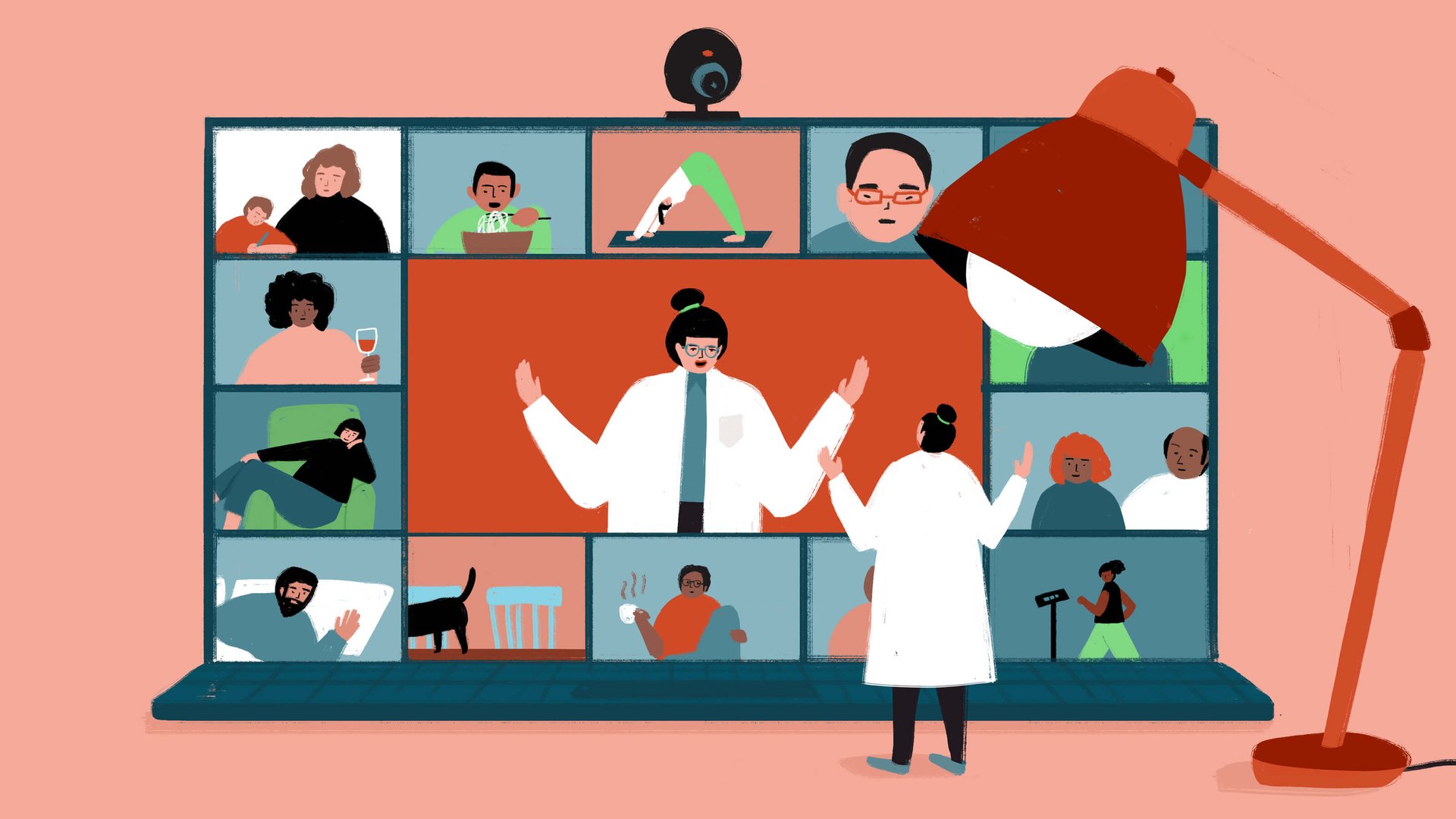

Spring is a particularly busy time for professional conferences. TED, Google I/O, IBM Think, and Milan’s Salone di Mobile are just some of the major annual gatherings scheduled for this time of year. Under normal circumstances, many of us would be polishing pitches, confirming travel logistics, and packing business cards for professional gatherings.
A global pandemic has vexed all plans. Many events foiled by Covid-19 are included on a dedicated Wikipedia page which reads as a memoriam to the best-laid plans of 2020. This disruption is more than a logistical nuisance—it equates to billions of dollars in losses. The decline in business air travel alone represents an estimated $809 billion hit to the US economy.
While many organizers opted to cancel or postpone events, many more plunged into the world of virtual conferencing. They’re realizing that hosting a good virtual conference isn’t simply a matter of transposing stage content and broadcasting it on the internet.
This is fueling a burgeoning industry. Online speaking gurus are offering tips on matters like ideal Zoom backgrounds, video teleconferencing software, optimal camera angles, or how to convey authenticity online. Startups are pitching alternative online meeting platforms, virtual reality, and volumetric video (aka holograms) to bring meetings to life. Graphic designers are advertising PowerPoint slide assistance and e-templates for academic posters. There are even magicians who specialize in performing illusions for virtual conferences. They’re called—what else?—Alakazoom!
And perceptive organizers are also looking to neuroscience for clues on how to better engage audiences on the other side of laptop screens.
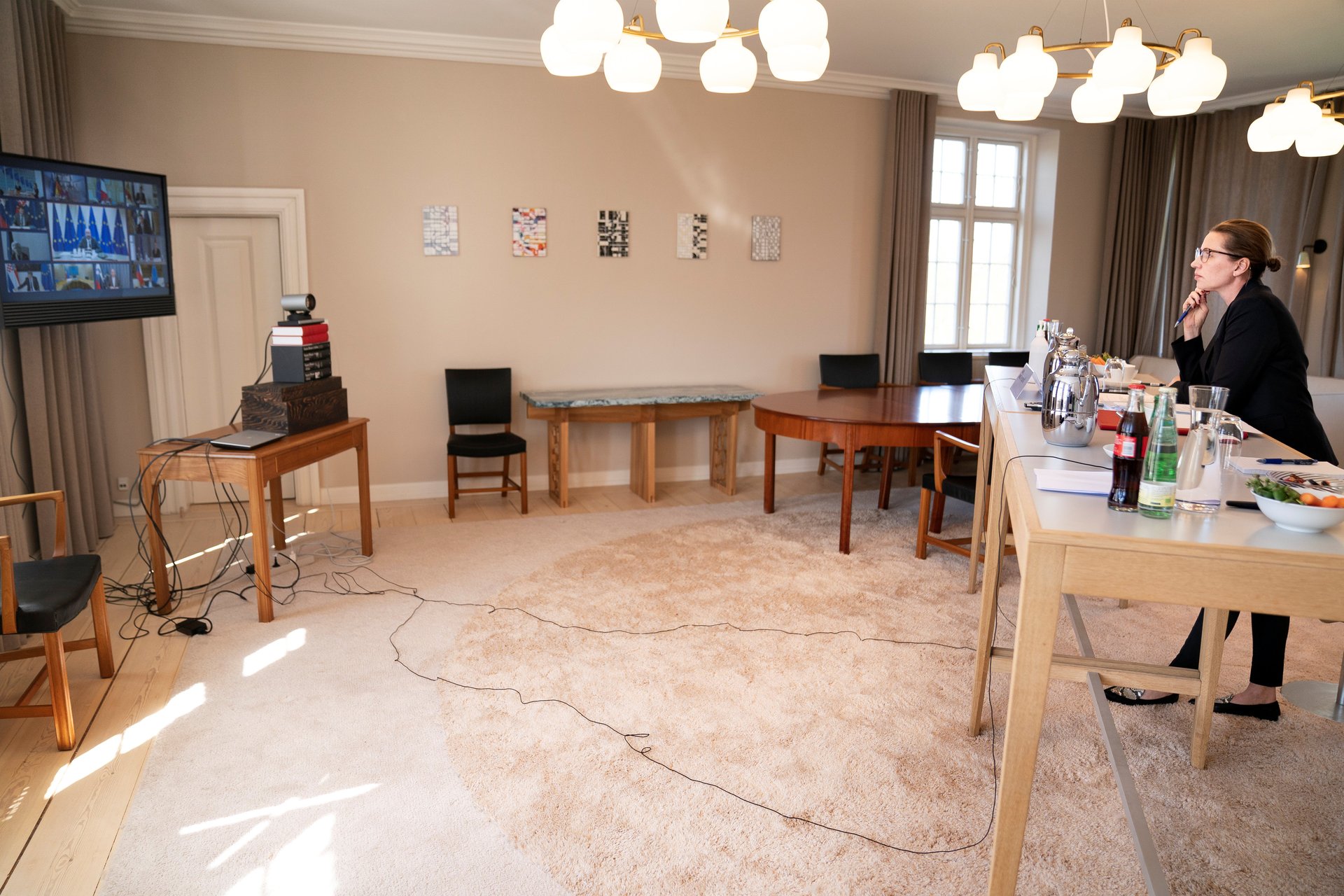
Largely stale formats until now, virtual conferences are being reimagined as a kind of experimental theater for exchange and networking amid this global health crisis. The medium, as we’re learning, has its own persnickety tech and rules of etiquette. We’re testing, we’re fumbling, we’re learning as we go. And, perhaps for the first time, people are rethinking the standard meeting format in ways that were previously unimaginable.
But is this enough? Our field guide asks if super-produced virtual conferences can ever replace shaking somebody’s hand, sharing a drink at the cocktail hour, or even flocking to a breakout session with people of similar curiosities.

Table of Contents
Curtain raiser | Great improvisations: Pivoting after the pandemic | The science of attention | Intermission: How about some magic? | A rehearsal for the future

Curtain raiser
$1.07 trillion: Global spending on conferences in 2018
In the month spent working on this field guide, I was able to join over a dozen conferences—originally set to take place in cities from Atlanta to Barcelona—all from my kitchen in Brooklyn. Most online events were free or less expensive than traditional gatherings. As Mike Monteiro, creator of the Quarantine Book Club quipped, “the seats are great because you’re already in ‘em.”
What is a virtual conference? Unlike a webinar or an online class, conferences typically feature presentations by experts about a specific discipline or theme. Pre-taped videos or “asynchronous content” can be part of a program, but they’re mostly live events to allow interaction among participants.
Traditionally, online conferences were largely structured as a back-up plan or add-on to a live event. The “lift and shift” mentality of transposing live events online without consideration for the specific parameters of the medium made them clunky, boring, and ultimately forgettable.
They have never been the main stage that they are now. Some organizers saw that as an opportunity to improvise.

Great improvisations: Pivoting after the pandemic
A lot of work goes into winning the attention of an audience that is likely watching from a small screen in the midst of some domestic chaos. Here are case studies of how four conferences pivoted online because of the pandemic.
IAM Weekend: 📍Barcelona, Spain > 💻 Zoom
It was supposed to be a glorious weekend in Barcelona. Andrés Colmenares and Lucy Black-Swan, founders of Internet Age Media (IAM), had been buttoning up the final details of their annual conference when Spain began implementing a nationwide lockdown to arrest the spread of coronavirus. Their chosen theme for their conference, which focuses on internet culture, was oddly fitting: “The Weirdness of Interdependencies.”
Believers in participatory, community events, Colmenares and Black-Swan did not want to reconvene a typical “virtual conference,” which they felt emphasized technology instead of giving space to the natural friendships that occur in convivial gatherings. “We wanted to do a remote live shared experience, basically putting people first,” explained Colmenares.
With barely three weeks to the conference, Colmenares and Black-Swan put out a call to the international community of designers, techies, artists, scientists in their network to help. Working around the clock, Colmenares, Black-Swan, and several volunteers managed to put together a Zoom-based interface for 350 paying attendees. They capped the number of attendees to make sure that groups in Zoom Rooms didn’t become so unwieldy and impersonal. They also offered a free public program via livestream for non-paying audiences. Outside the speaker program, they gathered people in Zoom Rooms for remote karaoke, a distributed breakfast, community yoga and a roster of impromptu hangouts.
Scrappy improvisation was the order for Colmenares and Black-Swan, who co-emceed the proceedings from their shared studio. One standard programming detail they didn’t anticipate: How to applaud speakers. With participants muted, they struggled with how to deal with the deafening silence after each presentation. They tried flashing heart-face emoji masks on screen, then invited attendees to shower the speaker with clapping emojis on the chat function. Eventually they settled on an applause track from YouTube. “The energy was so strong,” says Black-Swan. “It’s beautiful to witness how we can connect with each other in a video call through a phrase, an emoji, or forming hearts with your hands.”
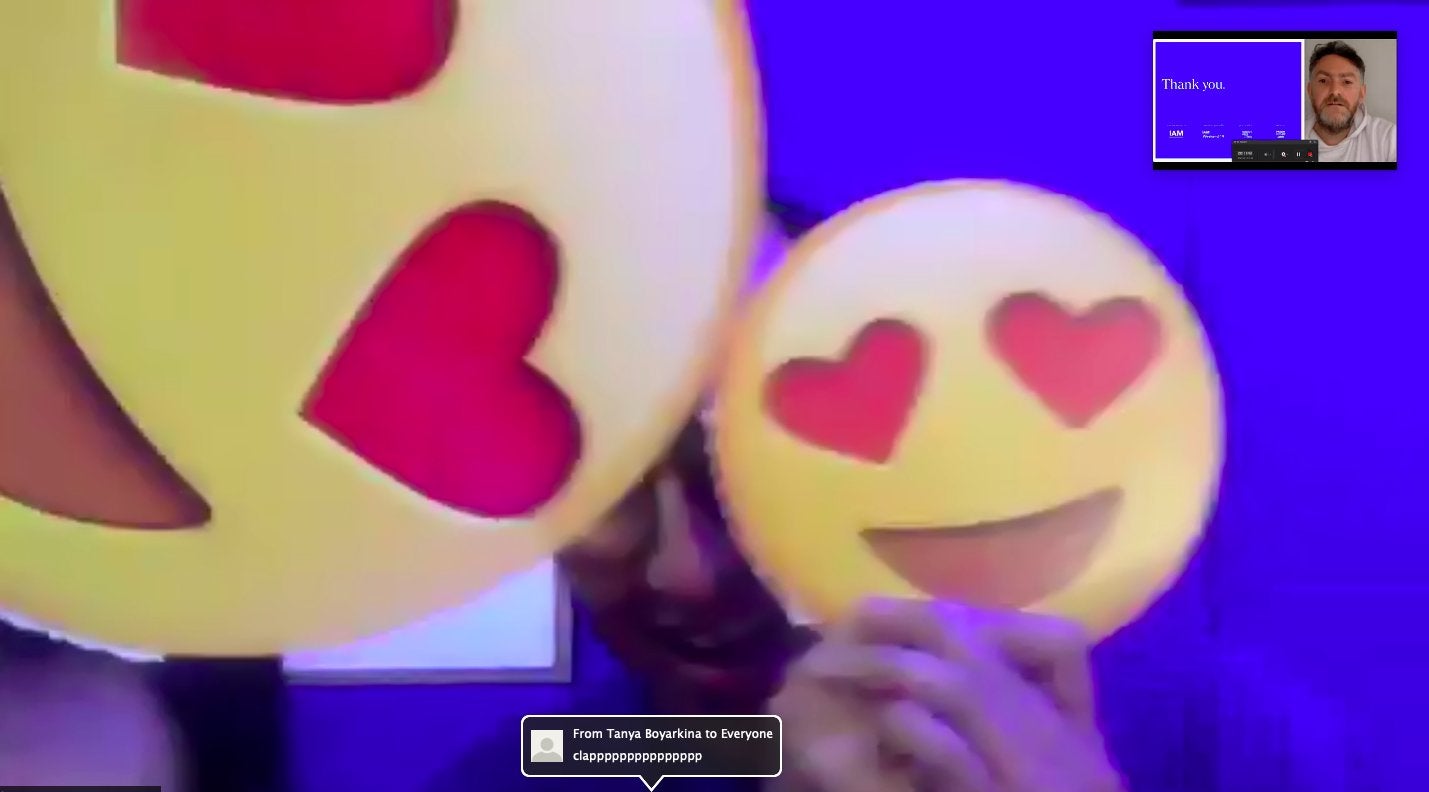
Colmenares and Black-Swan say that they were overwhelmed by the outpouring of support from volunteers, speakers, and attendees who embraced the unpredictability and the weirdness of the three days. “We were exhausted and emotional and Andres began crying at the start of the conference which got me tearing up too,” said Black-Swan. “We are just so grateful.”
Cherry Bombe Jubilee 2.0: 📍Brooklyn, New York > 💻 Instagram Live
Faced with New York City’s lockdown, Kerry Diamond, co-founder and editorial director of Cherry Bombe, had the idea of making Instagram the main stage for the female-focused food media outlet’s daylong conference.
On the first weekend of April, she kicked off the Cherry Bombe Jubilee by instructing the attendees to bounce around various Instagram handles. Attendees could visit cookbook author @jessiesheehanbakes for a baking demo, then hop over to the Barefoot Contessa @inagarten for a chat about home cooking, before watching the legendary, disguise-happy restaurant critic @ruth.reichl do a book reading.
“Just bounce around Instagram and have a good time,” Diamond said. “Leave comments, show some love for the people who are speaking and participating today.” She assured that all speakers would save their videos as Instagram stories, for people who missed parts of the nine-hour event.
“I had absolutely no idea what that would mean to put something like that together,” Diamond later told Ad Age. She reports that over 4,000 people from 63 countries logged in for part of the day, which is a significant spike from the 700 paying attendees expected for the in-person event in Brooklyn. A sweet follow-up: Participants were emailed a virtual swag bag with coupons and discount codes from the event’s sponsors. Diamond says that they’re already planning more virtual “jubilees” in the coming year.
IEEE Conference on Virtual Reality and 3D User Interfaces: 📍Atlanta, Georgia > 💻Mozilla Hubs
What if you could attend a conference as a fox, a googly-eyed robot, or any avatar of your choosing? In March, the Institute of Electrical and Electronics Engineers did just that with its first-ever all digital conference, drawing nearly 2,000 attendees working in the field of virtual reality. Conducted through Mozilla Hubs, the academic conference featured virtual rooms where attendees could walk up to researchers to ask about their posters, or go to a demo room to chat with inventors about their latest experiments. There was even a simulated stage where participants gathered to watch an awards ceremony together.
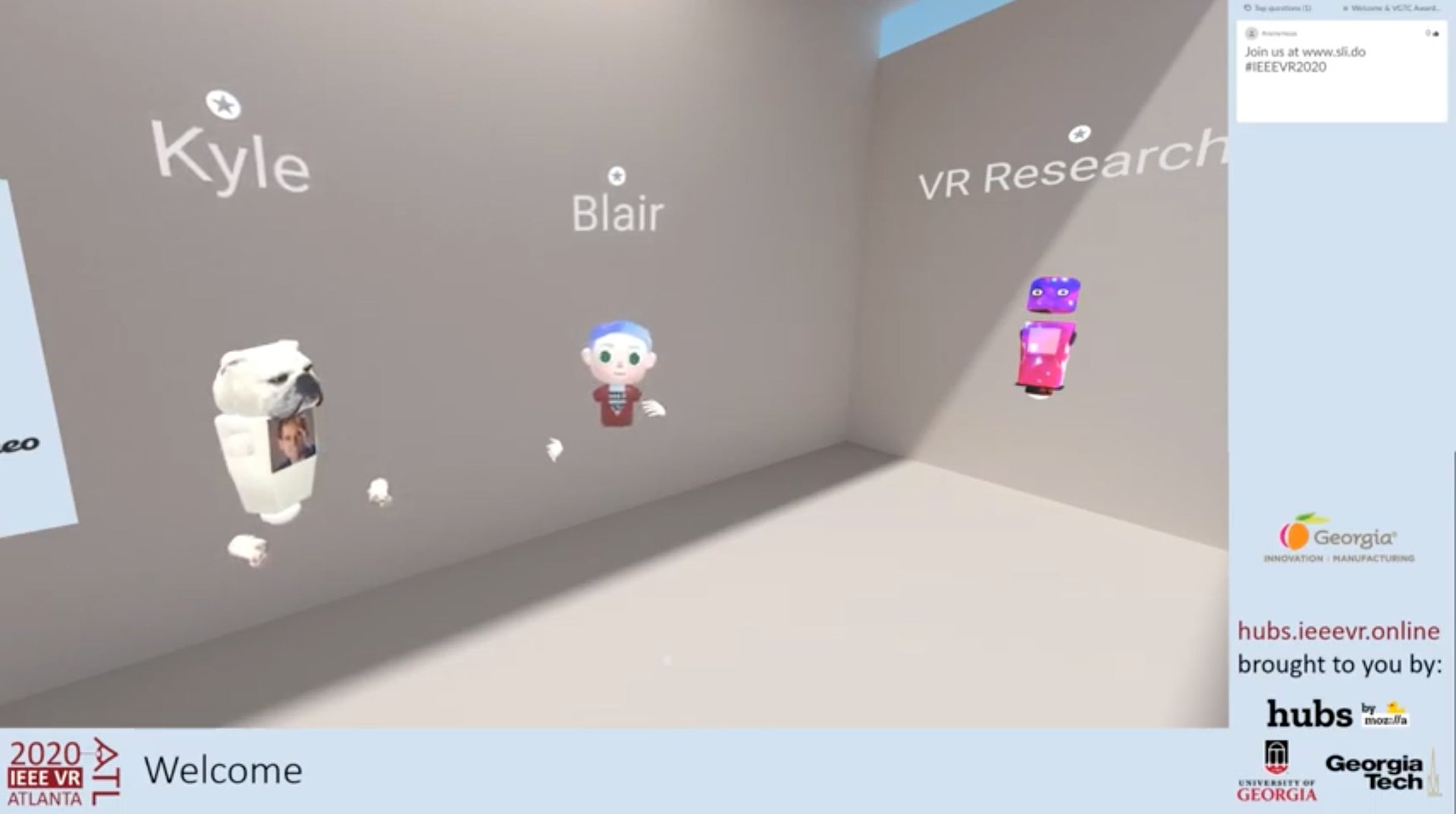
Like many conferences affected by Covid-19, organizers of the IEEE Conference on Virtual Reality and 3D User Interfaces decided to go online as a last-minute effort to salvage the event. The occasion also gave Blair MacIntyre, a professor in Georgia Tech’s School of Interactive Computing and the conference’s co-chair, the perfect opportunity to open up the conference to attendees who otherwise wouldn’t have been able to afford to go. “I think it’s critically important because there are lots of people in the world who have things to contribute and who would benefit from being part of this community,” he says. “And the climate ain’t getting any better.”
Of course, there are some kinks to work out, admits MacIntyre. For one, communication channels could’ve been streamlined. Many attendees were waiting for email updates, entirely missing the note to sign up for the conference’s Slack channel. There’s also the matter of the conference graphics. Organizers of academic conferences in general would do well by befriending UX and graphic designers to help reconcile the rat’s nest tangle of graphics on some interfaces.
But MacIntyre says IEEE’s experiment hints at possibilities for creating more inclusive and environmentally-responsible academic gatherings. Tufts University is trying out one model that features three simultaneous conferences in different parts of the globe, coupled with an online component. These in-person gatherings would be smaller and more localized, which would prevent more people from having to jet-set all around the globe, while the online platform could open the proceedings to the rest of the world.
Unlike the grid of talking heads in the usual virtual conferencing format, virtual reality offers immersive experiences for attendees. “All of the social cues are still there in VR. There’s body posture, eye gaze, facial expressions,” notes MacIntyre. Distractions are also minimized because one can’t really juggle tasks while donning a VR headset. Gaining an audience’s undivided attention is a particular problem in academic conferences,” says MacInyre. “At computer science conferences, half the people in the audience are usually typing away on their laptops…I was speaking to a colleague about how completely insane this was. We’re all spending all this money to go around the world—all this time investment—and people are just glued to their devices.”
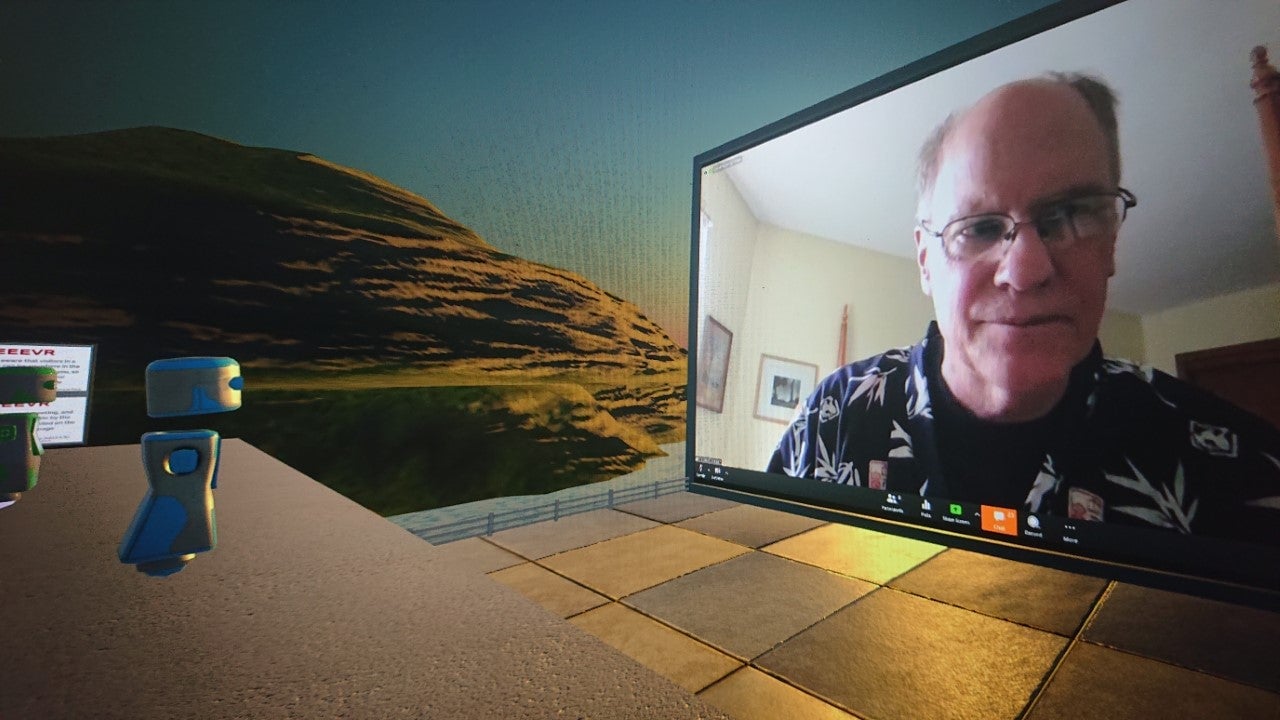
“I can easily see still going to a conference every year or two, but I don’t need to go to five or six a year,” says MacInyre. He argues that embracing virtual reality-based programs can also ease the intimidation factor during networking events. “This levels the playing field,” he says “There’s tons of people who just do not feel comfortable approaching senior people. But in VR, nobody knows who you are. You can have whatever avatar you want and you can walk up and talk to people.”
SAP Sapphire Now 📍Orlando, Florida > 💻Online
“We’re competing with cat videos.” Tasked with taking software firm SAP’s big annual conference online, Johann Wrede, the firm’s head of global events, knew that they needed to win the attention of a distracted audience who were stuck at home because of the pandemic. “We have to think about our content in their context,” he tells Quartz. “They’re either sharing Covid memes with their friends or they’re tuning in to pay attention to what we have to say.”
In lieu of SAP’s usual three-day event in Florida, which draws 25,000 attendees, Wrede and his team are working on a “deconstructed conference” called SAP Sapphire Now, which will feature live-streamed and pre-recorded keynote speeches, technical workshops, and interviews with thought leaders spread over several weeks, through June.
With the onus on conveners to create more compelling presentations, Wrede says he’s been studying the cadence of talk shows for ideas. “If you watch Jimmy Kimmel’s or James Corden’s late night shows, they know exactly how long a guest is going to be interesting,” he explains. “There are lots of great examples from broadcast television because they’ve spent years and years researching the right formats.”
Producing shorter and snappier presentations is especially crucial in technical workshops led by engineers who aren’t exactly trained to be entertaining or succinct. “It’s usually, click this button, then the next screen, then this feature,” Wrede observes. “ We don’t want anyone drooling asleep because it’s boring, so we’re working on reinventing this format.”
How will Wrede know if SAP’s virtual event is working? “If the whole thing doesn’t crash,” Wrede says, half joking. He explains that as much as the curatorial approaches change for online events, so must the metrics for success. “A lot of people tend to associate traditional KPIs [key performance indicators] that we see in the physical event to this digital event,” he says, such as the number of registered attendees. “It doesn’t make sense. The threshold to register to see something by giving your name and email address is much lower than the threshold to pay $2,000, book tickets to Orlando, and spend a week away from your family. We need to rethink the KPIs that define our success.”
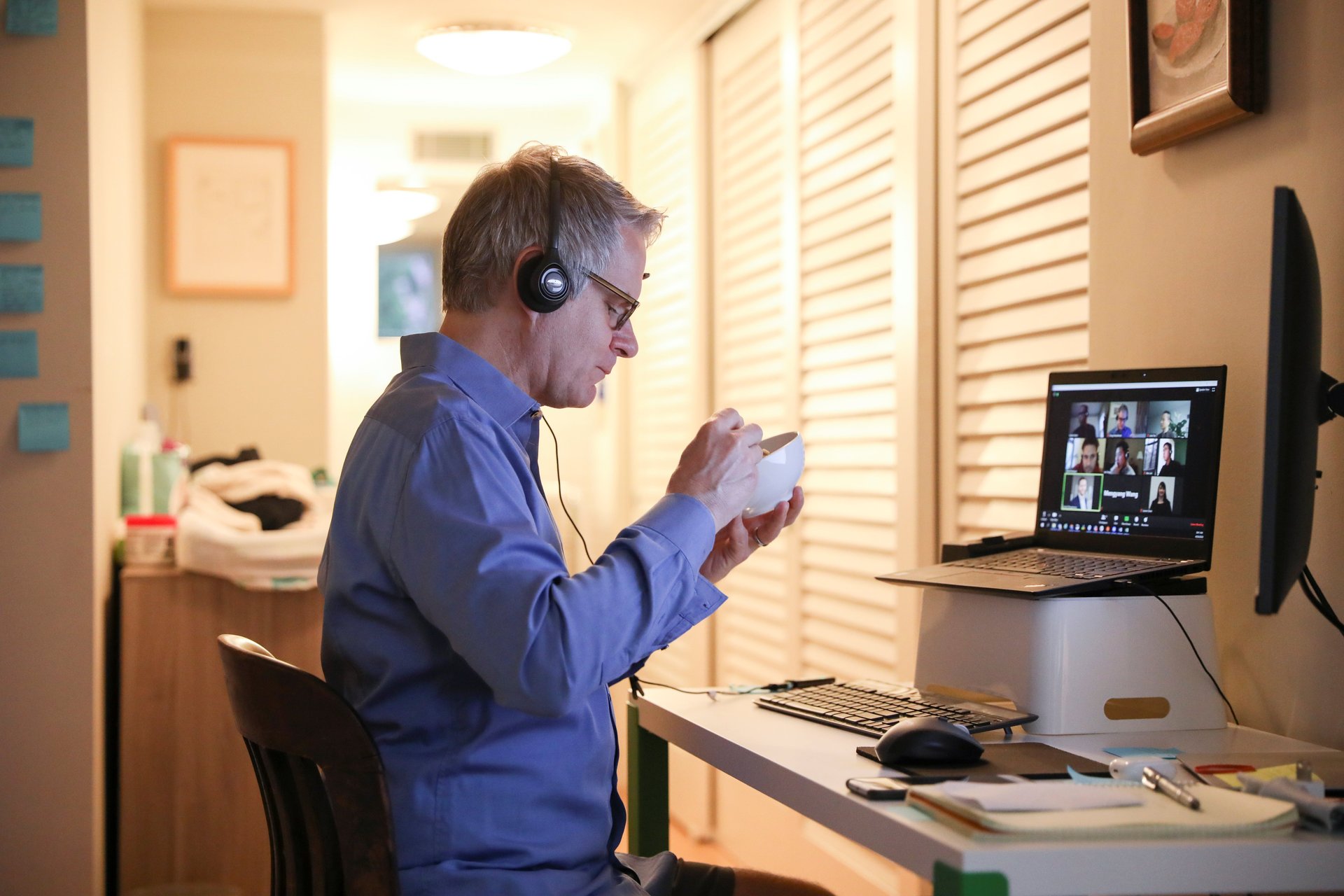

The science of attention
Germans have the perfect word for the necessary skill to survive a day of virtual conference. Sitzfleisch— literally butt meat—means to possess the mental and physical stamina to sit on your butt long enough to endure long session of online presentations. After the nth hour in front of a laptop screen, one might groan, “Ich habe kein sitzfleisch.” (I do not have sitting-patience.)
Scientists have theories about why online meetings are particularly onerous. For one, being on an on-camera video call requires more focus compared to a face-to-face meeting, explains Marissa Shuffler, a behavioral scientist at Clemson University. During a video call, our brains are working harder to discern meaning from scant non-verbal cues on the screen—from the tone and pitch of a speaker’s voice, body language, clothing, or personal effects in the background.
The moment we turn on our web cam, we also become acutely aware that we’re being watched. “You know everybody’s looking at you; you are on stage, so there comes the social pressure and feeling like you need to perform,” Shuffler told the BBC. “Being performative is nerve-wracking and more stressful.”
The “constant gaze” from a grid of heads can even be terrorizing, explains Jeremy Bailenson, founder of Stanford University’s Virtual Human Interaction Lab, in a recent article published in the Wall Street Journal. “One study we ran at Stanford showed that when people are exposed to large virtual faces, they flinch physically,” Bailenson recounts. “This may be part of the reason Zoom is so exhausting—for every minute we are in Zoom, we have staring faces inches from our own. But if we move too far back from the screen, our colleagues might think we are disengaged.”
Psychologists also cite the theory of plausible deniability as one reason why web conferences are so draining. Our minds struggle to reconcile the idea that we’re in the same space with others in a virtual conference.
Jon Levy, a behavioral scientist and founder of a consultancy called The Influencers, tells Quartz that mental fatigue also comes from seeing the same visual for too long. Citing a neurobiology study titled Pure Novelty Spurs the Brain, he explains that finding ways to break the monotony of seeing heads on a screen stimulates a part of the brain called substantia nigra/ventral tegmental area, which results in improved retention.
One can do this by introducing new elements such as quizzes, intermittently cutting to new speakers, or even playing a quick online game with other participants. “Fun and games have been wildly underused.” Levy says. “I think it’s a major lost opportunity for doing business.”

Intermission: How about some magic?
Alakazoom, a new startup by celebrated magicians Ryan Oakes and Doug McKenzie offers an astonishing answer to whether we can conjure the magic of human connection in remote gatherings.
Using online elements like email, emojis, and text messaging, Oakes and McKenzie have created an act called “Digital Deception” for virtual events. They’ve performed for companies like Google, IBM, Procter & Gamble, PWC, UNICEF, and even a family sheltered-in-place on a yacht. “Clients have hired us to entertain their clients because, you know, virtual cocktail hours can only go so far when everybody’s staring at each other,” says Oakes, the youngest winner of the Society of American Magician’s National Magic Competition.

The idea for an online show coalesced as soon as they began hearing of show cancellations because of the pandemic. “We registered the domain name, we built the website and ran to the camera store before everything got sold out,” explains McKenzie, a Scottish sleight of hand master who once stole former New York Mayor Rudy Giuliani’s watch in plain sight of his guards.
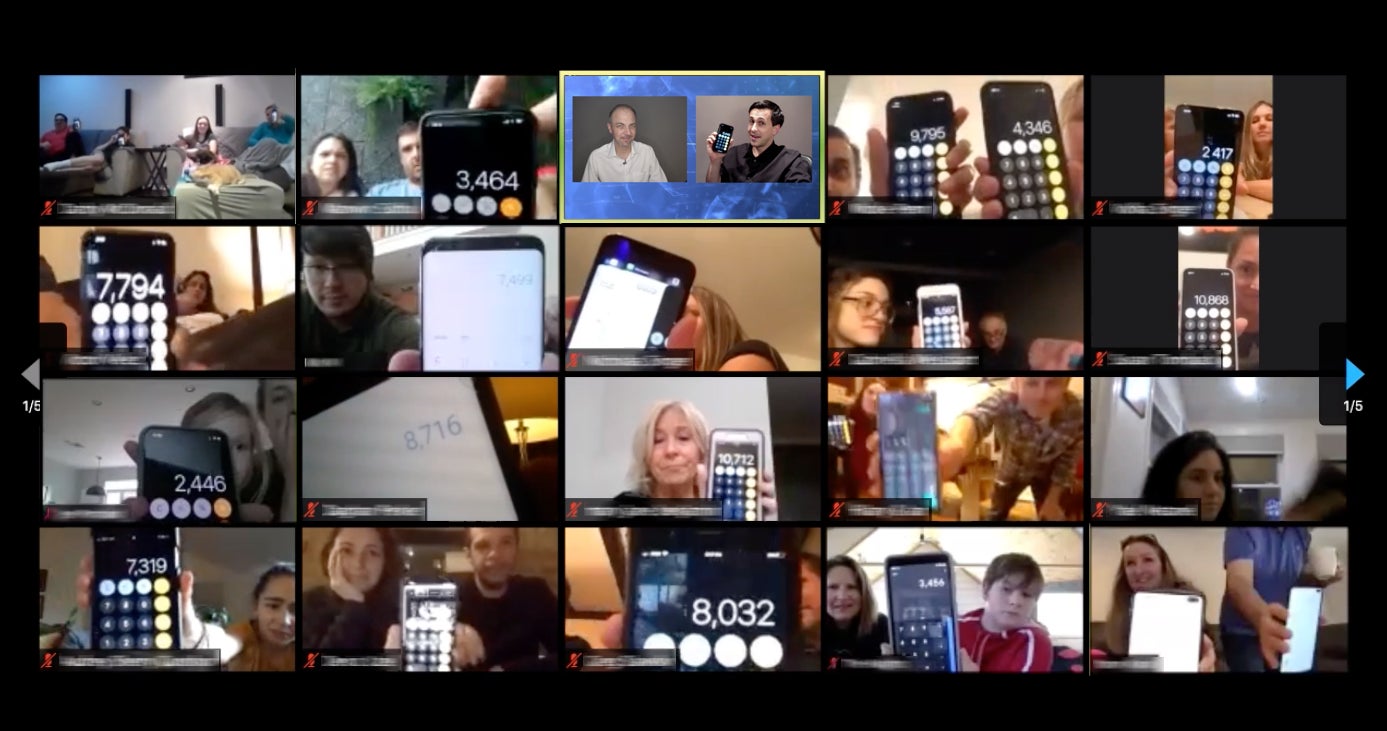
“When we first thought of it, we assumed we’d be doing our shows [sitting] together virtually. And then a week later I was like, we’re going to need two of everything,” says Oakes, who is self-quarantining in Brooklyn, a few blocks away from McKenzie.
Can a magician penetrate your laptop screen and know what’s on your mind? Alakazoom comes close to making you believe that fantasy. During our interview, Oakes and McKenzie wowed me with a bit they conjured using my smartphone. They even changed the weather forecast for my zip code before my eyes.
“We’ve designed it so things are happening with you at home. It’s not necessarily watching us do some sleight of hand on video on YouTube, which there are plenty of,” explains McKenzie. He says that not being in the same room with participants helps their act. “I think it’s more impressive than if I can read your mind in person, because I’m not there to look at you and pick up your subtle body language cues and all the other things that go into mind reading.”
Oakes and McKenzie have been studying about how to facilitate memorable human connection online, especially during a time when social distancing seems to have shrunken our universe. “We’re trying to replicate the shared experiences and memories of a group in a live format,” says Oakes.
It boils down to small details like switching to the gallery grid view so participants see reactions, or having sound effects, visual gags, and “groaner dad jokes,” as they might do in a live performance. It’s also about minding basic production values—lighting, audio, camera angle—to make sure that the experience flows as seamlessly as possible, despite unreliable wifi connections. Alakazoom also found the secret of preventing participants from multi-tasking. “That’s because we’ve hypnotized you,” jokes McKenzie.
Magicians keep an audience of any size mesmerized with clear, snappy prompts, interactive tasks, and a satisfying payoff in the end—a formula meeting organizers can learn from. “We’re still figuring it out but we’re going to see a lot of innovation in virtual meetings over the next few months,” predicts McKenzie. “Hopefully, we’re helping push that.”

A rehearsal for the future
The pandemic isn’t just improving the curation of online gatherings, it’s also spurred a wave of technology upgrades. Big tech companies—from Amazon to Google, Tencent to Zoom—have enhanced their products in response to the spike in online meetings. And with startups and gaming companies jumping in the web conferencing business, the choices can be dizzying.
A virtual conference is impossible without good technology. Yet the tech glitches—frozen video, choppy audio, and of course that pesky screen share lag—are among the top pain points of online meetings.
Sometimes, the whole thing just fails. This is the organizer’s nightmare, and it occurred, with a good dose of cosmic irony, during Deepak Chopra’s live “global meditation” event in March. The tech fail stressed out tens of thousands of zen-seekers who were left staring at a blank screen for about 20 minutes.
“Our collective energy crashed Vimeo,” the organizers wrote coyly on Instagram to try to appease the meditation-hungry mob, directing them to reconvene via Facebook Live. Wisened organizers now know to appraise participants of a Plan B in case the tech goes awry. Facebook, Instagram, or DingTalk in China are common back-up channels.
When Chopra finally appeared, he began with a note about the glitch. “We are going to meditate for healing and transformation in the midst of this global pandemic,” he said, appearing to glow from the back lighting. “We were hoping for a million people and indeed I think we had them, but as luck would have it, the Vimeo site crashed.”
Implicit in the term “virtual conference” is a poetic dissonance. The word “virtual,” from the Latin virtualis, connotes something that can only approximate the essence of the real thing. It’s close—almost but not quite. Organizational behavior expert Gianpiero Petriglieri observed that this lacuna—the yawning gulf between interacting as two-dimensional projections vs. meeting someone face-to-face—can result in fatigue. “Our minds are together when our bodies feel we’re not,” he explained to the BBC.
Levy, the behavioral scientist, has moved his regular dinner parties online since the mandatory lockdown, but believes nothing will replace actual physical contact with another human being. “I think this gets us a bit closer, but it won’t stop us from yearning. As a species, we’re incredibly lucky to have technologies like this so we can connect to some degree.”
Environmentalists are cheering the renewed interest in virtual conferencing. Reducing the aviation industry’s considerable environmental footprint is reason enough to rethink the necessity of having in-person gatherings at all. But experts warn that it’s not such a simple equation. Video streaming is among the most polluting activities on the internet. As more activities shift online during the pandemic, energy consumption from internet activity is rising. Scientists are currently calculating whether the increased data center traffic is uless damaging to the environment than traditional forms of travel.
Ultimately, the thrilling experimentation in the realm of virtual conferences is good news for the vast majority of workers who feel oppressed by dutiful office powwows and fruitless brainstorms. Conference organizers are taking notes for a future when gathering returns.
For the first time in a while, we’re reconsidering the essence of how, when, and why we gather. This serious investment in the art and science of virtual conferences promises to improve all meetings in general—and that’s something worth logging-on for.